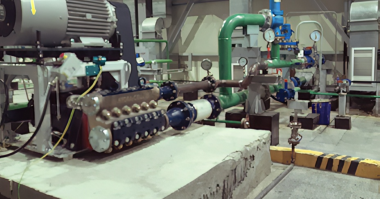Author: Chris Frail, Product Manager
Employing proper safety measures is worth our attention and every penny of our budget, especially when it comes to protecting personnel and the environment. This is why reliable gas leak detection monitoring is essential in places where there is risk of toxic or combustible gases, such as methane, ammonia, or hydrogen sulfide – to name a few. These dangerous gases can leak from several locations, including entry and exit points to storage tanks as well as piping joints that might be subject to thermal contraction. Many operators have had to either install hard-wired systems or send technicians with hand-held gas sniffers to sample the air at regular intervals. There can be drawbacks to both of those approaches, and at times when many need to make their budgets stretch as far as they can, we must find ways to ‘work smarter’, not harder.
One way to lower the budget impact of gas detection for safety critical applications is to reconsider choices when selecting instrumentation. With the availability of wireless, battery operated gas detectors, significant time and cost can be saved versus installing traditional wired detectors. For new projects, you may lower front-end engineering and design (FEED) expenses, in addition to the cost of hundreds of feet of wire (approx. $150 per foot of cable); that can result in significant savings. For plants requiring additional detectors to expand coverage, a wireless detector may be the most practical approach.
Improving Gas Leak Detection Effectiveness with WirelessHART (Download the whitepaper)
When selecting a fixed wireless gas detector, there are some key considerations. Battery life can vary based on sensor technology and ease of replacing or recharging batteries. It is also important to consider how often your technicians will have to replace those batteries, as higher frequencies can lead to longer term operation costs. What type of wireless system is used? A proprietary wireless may require additional hardware like gateways and repeaters; whereas if there is an ISA100 or WiHART network, you can more easily install on existing infrastructure. If only one manufacturer is available on the wireless network type, switching costs will be higher in the future.
A couple challenges end users have for accepting wireless as part of a safety critical application are reliability and security. This can be overcome in part by using industry standard protocols, such as WirelessHART®, which relies on a mesh network. This allows each device to operate as a repeater, creating a self-healing mesh that is made more robust by adding more devices to the network, ensuring more potential paths for a signal to get to the gateway. Because it is an industry standard, WirelessHART’s security can be continuously improved by multiple companies, and it is not upon the end user or a single supplier to maintain the network or protocol to keep up with evolving threats. To learn about wireless gas detection, and how it can provide reliable, safe coverage in your safety critical applications without significant impact on your budget, look at the Vanguard WirelessHART® Gas Detector.
Complete this form below to use a free wireless gas detector cost benefit calculator.






Comments